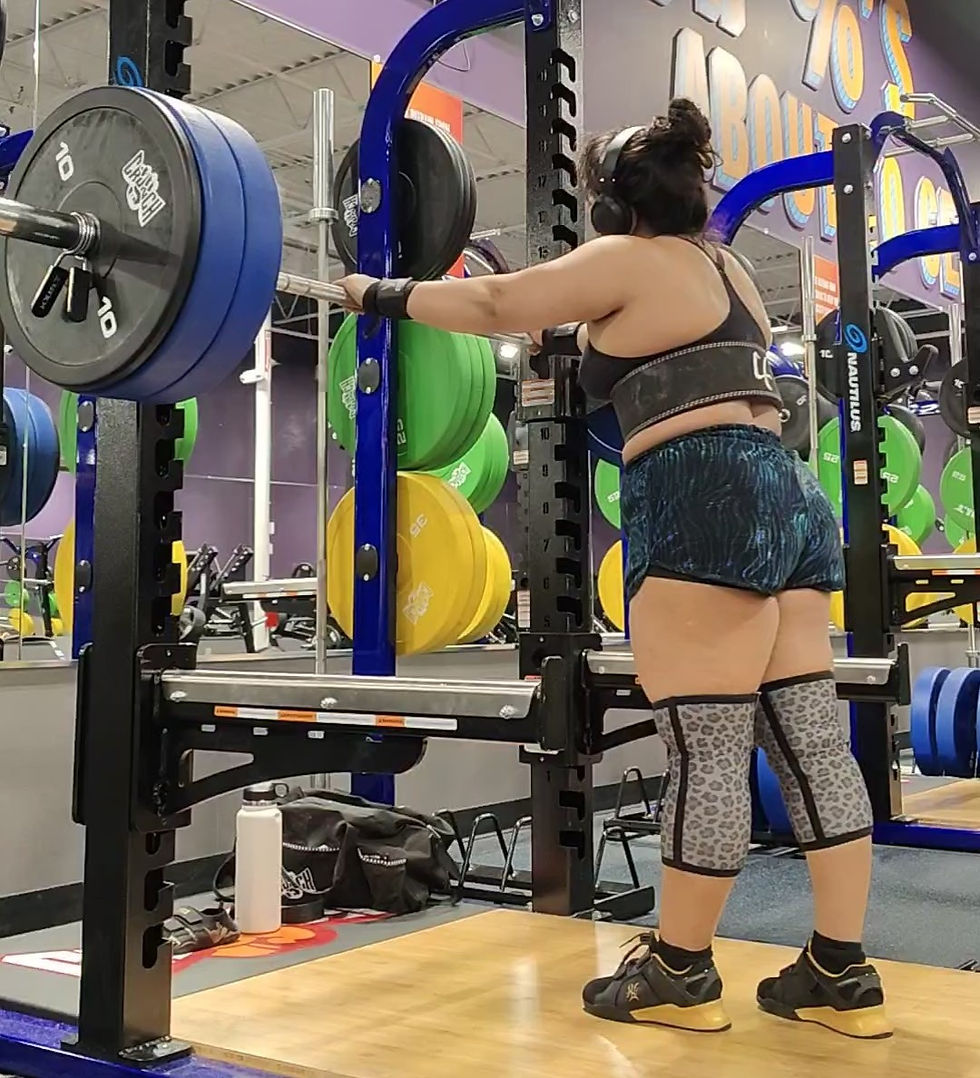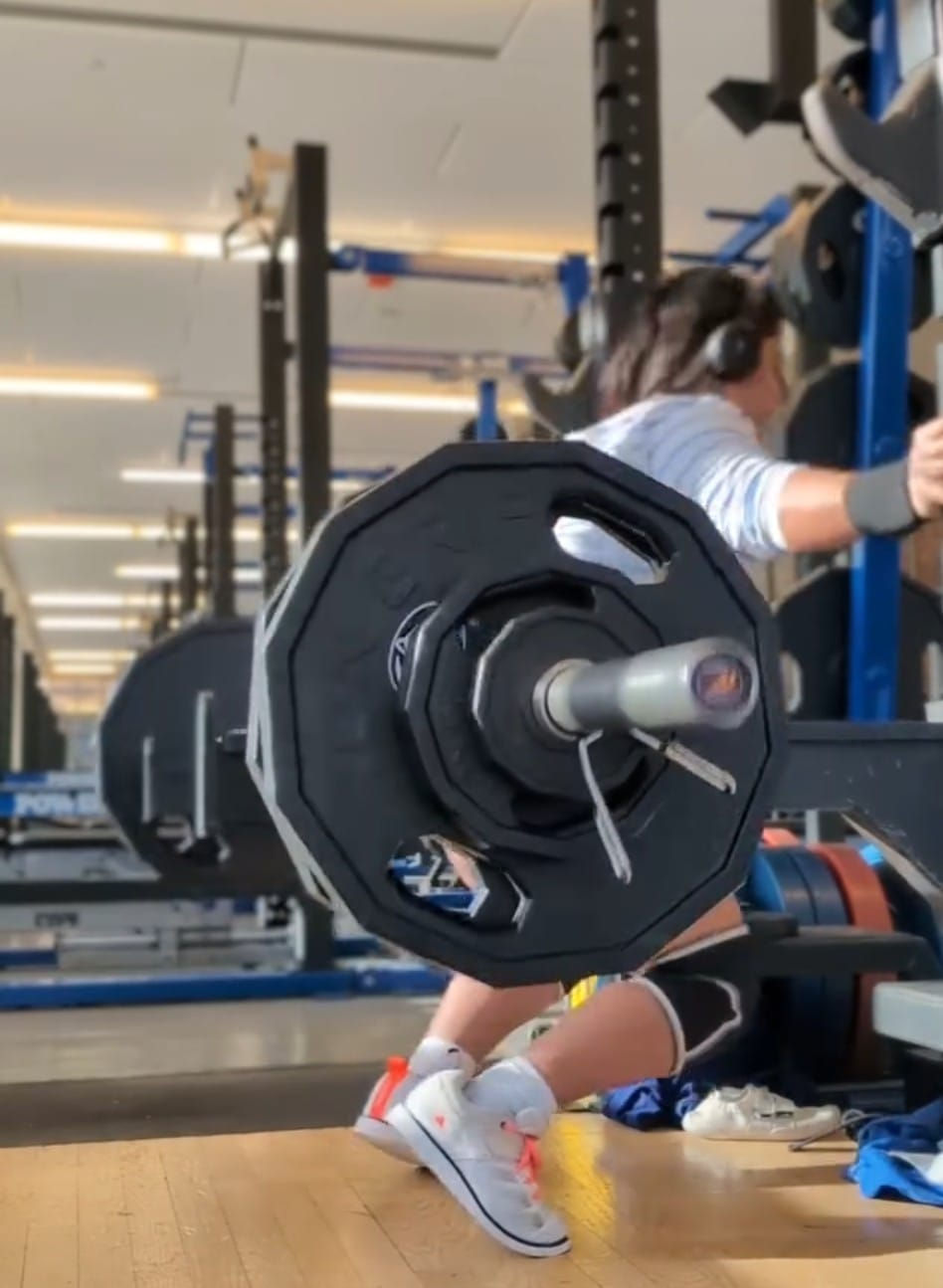What Powerlifting Taught me About UX Research and Design
- Tejaswini Joshi
- Jul 5
- 4 min read
Powerlifting, outside the powerlifting community, is often mistaken for brute force. After all, some elite lifters push over 1000 lbs (nearly 450 kg) in a single lift. It looks like the goal is simple: move the most weight at any cost.
That moment where you hit your heaviest lift isn’t a product of chaos. It’s the result of every quiet rep, every hour of mobility work, every structured training cycle that came before it. It’s deliberate. It’s intentional. And even with the most careful planning, things still go wrong. You learn how to fail safely. And still, sometimes, you get injured.
Powerlifting and UX research don’t look alike on the surface, but both demand trust in the process, an eye for detail, and a strange delight in delayed gratification. In both, I’ve learned to move with intention, track everything, reflect deeply, and find power in results earned through consistent, purposeful effort.
In both disciplines, growth is not accidental. It is cultivated through craft — through showing up, reflecting honestly, and building your own work ethos.

What I’d like to share here are three insights I’ve adapted from powerlifting to UX research. Adapted not just as metaphors, but as practical, lived strategies for approaching complex, human-centered work.
Slow is Smooth, Smooth is Fast
In powerlifting, rushing your form wrecks your lift. But moving with intention — focusing on bar path, breath, and body tension — creates efficient, explosive movement.
Take squats, for example. You get under the bar. You center it across your shoulders. You take a breath, brace your back and core, and become one with the bar. Then you unrack. You walk it out. And once again, you pause, ground yourself, reconnect — and only then, you lift.
Everything is deliberate. Nothing is rushed. Because when you move with smoothness, speed follows naturally. Power comes from precision.
In UX research, slow methods like diary studies or ethnographic interviews, contextual inquiries and observations seem inefficient at first. These methods are often seen as time consuming, especially when teams are chasing fast timelines. But slowing down builds depth — and that depth leads to faster clarity later.
“I’ve learned not to chase desperate urgency. I chase smoothness, which leads to efficient, consistent speed. In my research plans, in my squat reps, in the arc of insight.”
Deep qualitative work is meant to be done before things are on fire. So that when urgency does arrive, we’re ready. We move forward with robust insights and a stronger plan and execute it with the best possible chance for success.
Plan long term, reach there by executing short-term wins
You don’t hit a 1000lb PR overnight. You build up to it, through week after week of micro-progress, load management, and trust. Along the way, you aim for rep PRs, you aim for efficient movement, and sometimes, you find a win when the same weight feels lighter than what it felt a few months ago.
UX research and design works the same way. You don't build products people will love in the first sprint. You build towards it through iterative feedback from users, through reflexively understanding of what needs to be changed, and and translating that into actionable, short term insights
You build a body of insight.
You advocate, share, repeat.
Small wins compound.
A PR is the result of a thousand ordinary sessions. A brilliant product is the result of a thousand honest conversations with people
You can plan everything and still fail — and that’s okay
In both powerlifting and UX research, you can do everything right, and still miss the lift. Still get inconclusive data. Still fall short of the goal. Still get complaints about the product.
You eat well, sleep right, warm up perfectly, and the bar still doesn’t move. You craft the perfect research plan, align stakeholders, write the cleanest script. And the insights fall flat.
It’s frustrating. But it’s not wasted.
It’s data. It’s feedback. It’s part of the process.

You train for how to fail safely, both physically and emotionally. You build a practice of reflection, adjustment, and trying again.
Failure used to terrify me. Now I see it as a checkpoint. It doesn’t mean I’m weak. It means I’m learning.
Sometimes the missed lift teaches you more than the one you hit.
Sometimes the silence in an interview reveals more than the quote, and sometimes complains about a cosmetic issue might lead to a larger functional problem. It is all data.
Rest is Productive
In powerlifting, rest isn’t a luxury. It’s a requirement. You don’t build muscle during the lift. You build it after: in the repair, in the recovery, in the stillness, in the taper and in the deload weeks. Without rest, at best you plateau, or at worse you break.
Deload weeks, rest days, active recovery — all of it is part of the plan.
UX research is the same.
The richest insights don’t always arrive in interviews or usability tests. They show up in the quiet hours afterward. Like while synthesizing, reflecting, or sometimes just staring at a wall, trying to make sense of it all.
Rest is when connections are made.
Rest is where clarity lives.
I’ve stopped seeing rest as the thing I do when I’m done working. Now I see it as part of how I work.
Taking a walk is part of the insight process.
Letting your brain wander is part of the pattern-making.
Lying on the floor in flop mode is sometimes the most productive thing you can do.
Closing: Strength is a practice
Powerlifting taught me how to build strength slowly, intentionally, and with respect for failure and recovery. UX research taught me the same — but with people, patterns, and products instead of plates.
Neither discipline is flashy.
Both demand you show up consistently, reflect honestly, and trust the process — even when it’s slow, even when it’s uncertain, even when it fails.
This is the ethos I bring to my work:
Move with intention.
Play the long game.
Learn from what breaks.
Rest like it matters — because it does.
Strength isn’t just what you lift.
It’s how you listen.
It’s how you build.
It’s how you keep going.





Comments